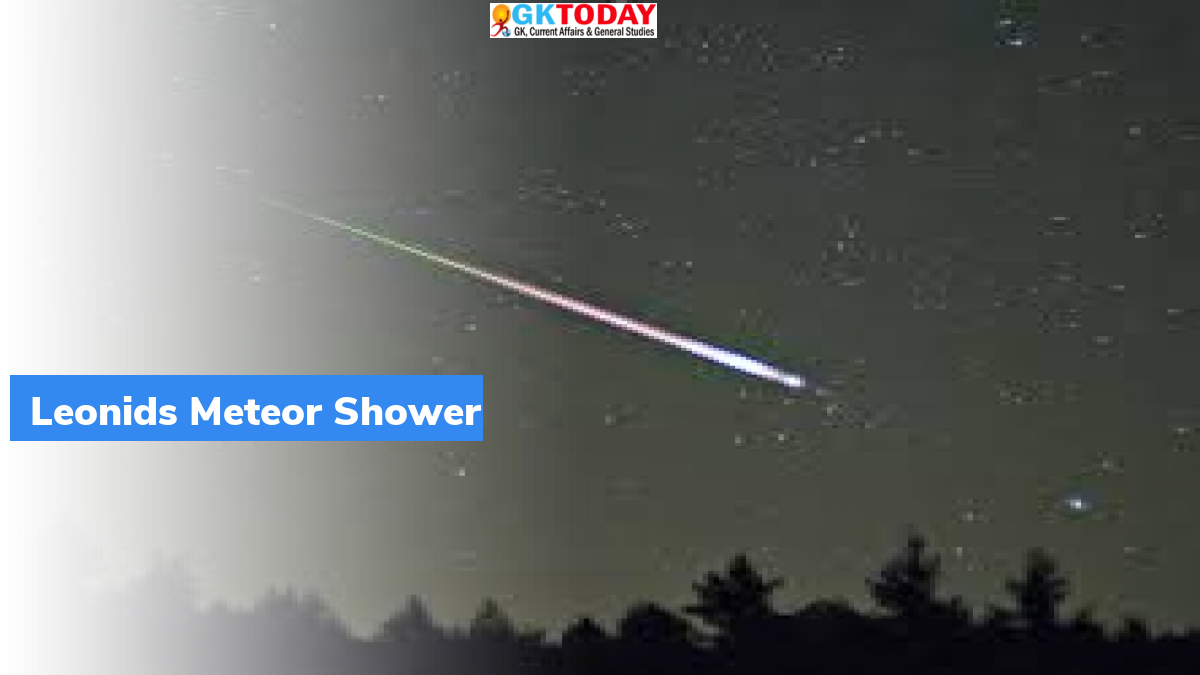Leonids Meteor Shower
The Leonids Meteor Shower occurs in the month of November. It turns into a storm every 33 years. This meteor shower is associated with the comet called Tempel-Tuttle.
About Leonids Meteor Shower
- The Leonids get their name from their constellation Leo, that is, Tempel-Tuttle originates from Leo. The Tempel-Tuttle takes 33 years to orbit the sun.
- The Leonids travel at faster speeds which is 71 km/hour. But their rates are low, which is, 15 meteors per hour.
- The Leonids are also called Earthgazer meteors or Fireballs. They are called earthgazers as they streak close to the horizon. They are called fireballs as their colours are bright.
The Concept of Meteor Shower
The meteor shower is the light produced due to the friction between the earth atmosphere and the meteorite. Comets are snowballs of frozen gases, dust and rocks orbiting the sun. The comet Tempel – Tuttle leaves meteoroids (small bodies moving in the solar system) in its path. These meteoroids are disturbed by planets (especially Jupiter) and also by the radiation pressure of the sun. When they encounter the earth’s atmosphere heat is generated due to the friction. They burn in the heat releasing enormous amount of light and heat energy. This is seen as meteor shower from the earth.
Meteor Storm
The Leonid meteor shower turns into a storm every 33 years. This is because the Tempel – Tuttle takes 33 years to orbit the sun. A meteor storm should have 1000 meteors per hour. The last Leonid storm occurred in 2002.
Why does Leonids create storm once in 33 years?
Assume that the comet Tempel – Tuttle is orbiting through points A, B and C in the solar system. Say it passed through point B in the year 1966. And it dropped some 1000 meteoroids in point B. These meteoroids are deflected by other planets and sun. Because of this, in 1988, there are only 300 meteoroids in point B. The earth is visiting point B in 1988. It will encounter very less meteor showers. Suppose, if the earth visited point B in 1966 itself, it would have encountered more meteoroids and thus a meteor storm would have occurred.


